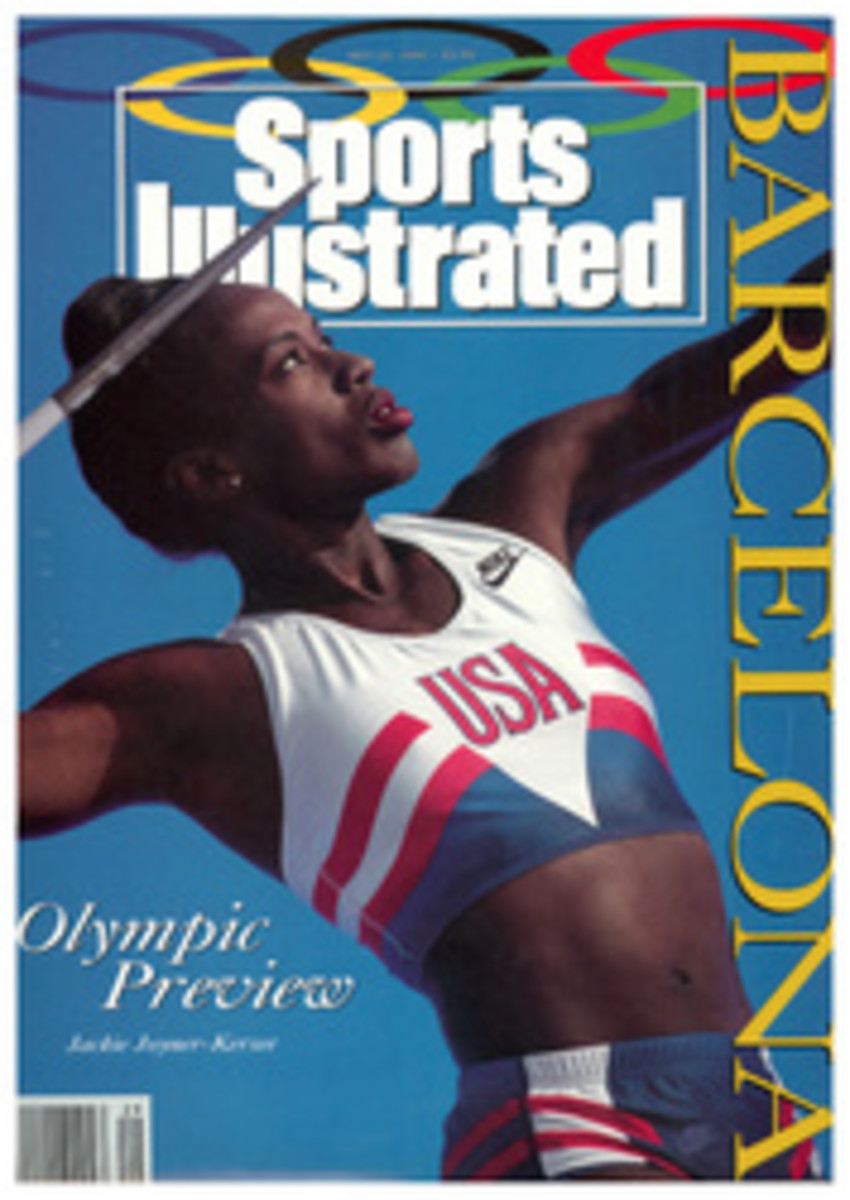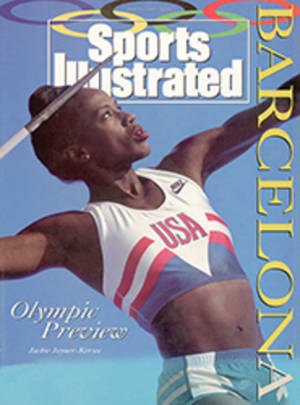
Put-down Artist
Beneath the domed roof of Havana's Revolution Square Sports Hall one afternoon in May, with the burning visage of Che Guevara looking down from a giant mural above one side of the arena, Joel Despaigne dabbed the perspiration from his own imposing countenance and stared away, a mural in miniature himself.
"I was a very restless kid," says Despaigne, the master spiker of the Cuban national volleyball team. "I always wanted to be doing something. I was always working on something, always moving. It's different now. The experience of the years has calmed me down."
If the 26-year-old Despaigne is a quieter, more kicked-back soul than he once was, the change is nowhere less apparent than on the volleyball court, where his unrestrained style of play has made him an international totem of the sport. He is also the chief reason why the Cuban team is slightly favored in Barcelona over the other powers, including the Unified Team, the Netherlands, Italy and the defending Olympic champion, the U.S. Even in the casual setting of training camp, Despaigne performs with ruthless intensity.
"In every training session I concentrate on power, running and hitting velocity," says Despaigne. "In every session I must try to increase the difficulty and do it better, developing my explosiveness and speed."
For almost two hours that afternoon in May, during a series of intramural games between the Cuban A and B teams in the empty arena, Despaigne raced and bounded as if playing before a packed house, diving, digging, leaping and, above all, spiking with that quick, propellerlike spin of his right arm. In what former U.S. coach Doug Beal calls this "age of great attackers"—among them the Netherlands' Ron Zwerver, Italy's Andrea Zorzi, the Unified Team's Dmitri Fomin and the U.S.'s Steve Timmons—Despaigne is widely thought to be the most dynamic, powerful spiker of all.
Karch Kiraly, who led the U.S. to the gold in Seoul and is still regarded as the world's finest all-around player, says simply, "Despaigne shoulders the entire Cuban team." Most vividly, Kiraly recalls one game—between Cuba and Italy in the finals of the 1990 world championship in Brazil—that Despaigne nearly won single-handedly. "I watched Despaigne's teammates set him eight times in a row at match point," says Kiraly. "He put every one of those balls down. Italy wound up winning 16-14, but not because of Despaigne. He's a clutch player."
Indeed, some Cubans esteem him as the island's most gifted athlete. At 6'4", 210 pounds, he leaps above the net like a marlin breaking water, not so much jumping as exploding in the air. At the height of the jump, he nails a spike downward at a speed estimated at 75 miles per hour, about as fast as a man can drive a ball that compresses to about 80% of its size on impact. He has unusually long arms—standing straight, he can nearly touch his kneecaps with his middle fingers—as well as extraordinary upper-body strength. He appears to have all the body fat of a Havana cigar.
Fred Sturm, the coach of the U.S. team, says dryly, "It's good to have a volleyball player with a vertical jump like Michael Jordan's and an arm as live as Nolan Ryan's."
Despaigne was born and raised in Santiago de Cuba and spent much of his boyhood on the ranch where his grandparents lived, helping them grow coffee and tend domestic animals. At age 12, entering the Escuela de Iniciación Deportiva Escolar, a school for promising jocks, he discovered in volleyball an outlet for his youthful energies. By the time he was 14 years old, he had shown such an aptitude for the game that sports officials moved him from Santiago to Havana to play on the junior national team. Soon he was attracting attention at the international level.
"I could see then that one day he was going to be the leader of that team," says Sturm. "Very aggressive, very fiery."
Despaigne's emergence as a world-class player—from rough-hewn slasher to captain of the national team—began around the time of his marriage five years ago to Maria Teresa Santamaría, then a member of the Cuban women's team. "Marriage has matured him," says his coach, Orlando Samuel. "It has changed him in a positive way." Today, with their first child, a boy, due in August, Maria is his conscience in the weight and fitness rooms. "She has counseled me and taken care of me," Despaigne says. "She does everything. She is very concerned with my conditioning. We speak constantly about these things."
Cuban athletes train and live in an environment as structured as a military school's. "It is a very planned life," Despaigne says, with everything from workout schedules to meals rigorously supervised. Volleyball players train twice a day, six days a week, and nutritionists balance their diet, from meat to mangoes to milk. In a society increasingly strapped by shortages—a condition brought on by the collapse of the Soviet Union, for years its chief provider, and aggravated by the U.S. economic embargo—the athletes are members of a very elite corps of citizens whose every need is met. The athletic field has become one of Cuba's last venues for international glory, though there has been precious little glory lately because of the country's boycott of the '84 and '88 Games.
"It is very important for me and for my country to win in the Olympics," Despaigne says.
The day's training had ended, and Despaigne was standing now outside the Sports Hall, waiting for a ride home. It was rush hour in Havana, and the surrounding streets and boulevards were teeming with bicycles moving through the haze of blue fumes emitted from aging buses and cars in need of spare parts.
"Really, the economic situation has not affected the team," Despaigne says. "We have tried to transcend the difficulties. We have tried to train better and improve. We have tried to not let it affect our minds."
All he wants to do now is play in the Games—"It's an experience unlike any I've ever had"—and show what he can do in Barcelona. And expressing a wish that cuts across political and economic lines, he says, "I would like to be with the U.S. basketball players. To at least see guys like Michael Jordan. They are among the greatest athletes in the world, and I have never seen them."
It's high time. They are really kindred spirits—even if they're from different worlds.
PHOTO
KEN REGAN/CAMERA V
Despaigne (third from rear) and his mates celebrated after taking the gold at the '91 Pan Am Games.
PHOTO
GIANFRANCO GORGONI/SYGMA
A leaper with unusually long arms, Despaigne makes a specialty of 75-mile-an-hour blasts.

